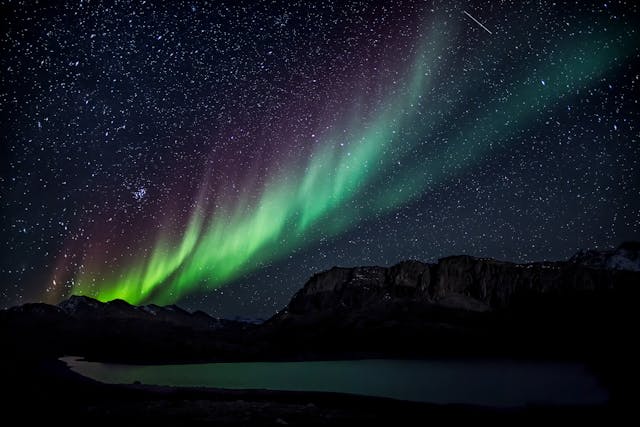Skywatchers in the northeast us, upper midwest, and parts of the northwest may catch a glimpse of the aurora borealis from July 30 to August 1, though the display won’t match the intensity of May’s show
The aurora borealis, commonly known as the northern lights, is making a return this week, offering skywatchers another chance to witness this stunning natural phenomenon. The display is expected to occur from July 30 to August 1, though it won’t be as spectacular or widespread as the one seen on May 10-11.
The National Oceanic and Atmospheric Administration (NOAA) Space Weather Prediction Center initially issued a geomagnetic storm watch through July 31, later extending it to August 1. The centre noted increased solar activity, including a strong solar flare and several coronal mass ejections (CMEs), which are expected to produce a geomagnetic storm.
A coronal mass ejection involves a rupture in the sun’s magnetic field, leading to an explosion that sends solar particles toward Earth. These particles interact with Earth’s magnetic field, causing geomagnetic storms that can enhance the visibility of the aurora borealis. The NOAA has issued a G3 storm watch for July 30, indicating a strong storm and a G2 storm watch for July 31 and August 1, indicating a moderate storm. While this event won’t reach the intensity of the G5 storm seen in May, it still promises a captivating show for those in the right locations.
Embed from Getty ImagesSkywatchers in the Northeast US, upper Midwest, and parts of northern Oregon could potentially see the aurora borealis, especially if clear skies allow. The northern lights may be visible in these areas if conditions align and the storm’s effects reach far enough south.
For the best viewing experience, it’s important to escape city lights, as urban areas with high levels of light pollution can hinder the visibility of celestial events. Finding a dark, rural location away from streetlights will improve your chances of seeing the aurora. Additionally, keep an eye on weather conditions, as cloudy skies can obstruct the view of the northern lights.
There’s no specific time that guarantees the appearance of the aurora borealis. It’s best to stay patient and observant during the dark hours of the night, as the aurora can appear and disappear intermittently.
This summer is packed with astronomical events, including a planet parade featuring six planets on August 23 and a nova expected to light up the night sky shortly, though its exact timing remains uncertain.
Analysis
Political
The aurora borealis events have no direct political implications, but the public’s increased engagement with astronomical phenomena can be indirectly influenced by political climates, such as government support for space exploration and scientific research. Enhanced visibility of natural phenomena often prompts greater public interest in science and technology, potentially affecting policy discussions and funding priorities.
Social
The northern lights’ return highlights a growing societal interest in natural wonders and outdoor activities. The anticipation of such celestial events fosters community engagement and collective experiences, as people gather to observe and photograph the aurora. Social media amplifies this phenomenon, with users sharing photos and experiences, thus increasing public interest in both amateur astronomy and the science behind such events.
Racial
While the northern lights themselves are not racially significant, the way different communities access and experience such events can reflect broader societal issues. Accessibility to rural areas for optimal viewing might vary across different socioeconomic and racial groups, influencing who can participate in skywatching activities. Ensuring equitable access to such experiences is a consideration for fostering inclusive scientific engagement.
Gender
Gender does not play a direct role in the occurrence of the aurora borealis, but societal participation in skywatching and astronomy can be influenced by gender norms. Historically, certain fields in science, including astronomy, have seen gender imbalances. However, growing efforts to encourage diverse participation in STEM (Science, Technology, Engineering, and Mathematics) fields are helping to bridge these gaps, promoting broader engagement across all genders.
Economic
The economic impact of natural events like the aurora borealis can be observed in tourism and local economies. Areas where the aurora is visible may experience a boost in tourism, as people travel to witness the spectacle. This can benefit local businesses and contribute to the regional economy. Conversely, the costs associated with travel and the need for investment in local infrastructure to accommodate visitors can also impact economic dynamics.
